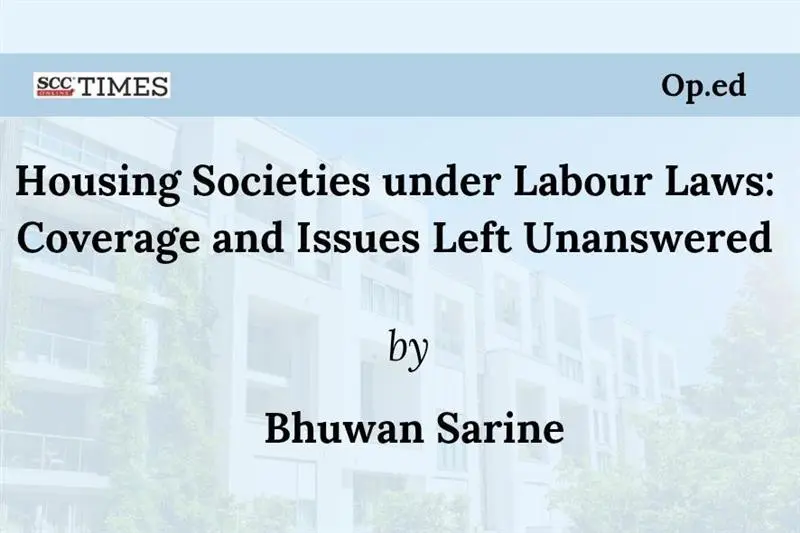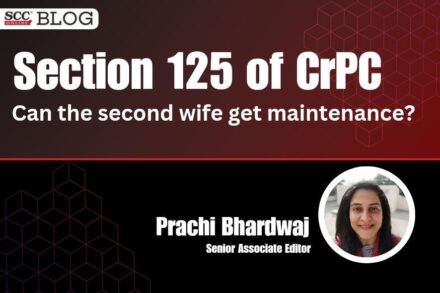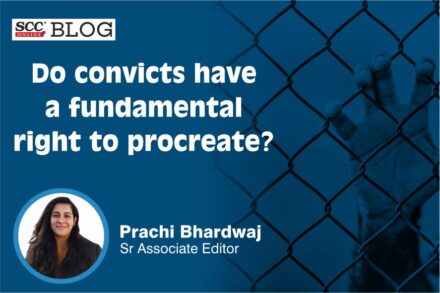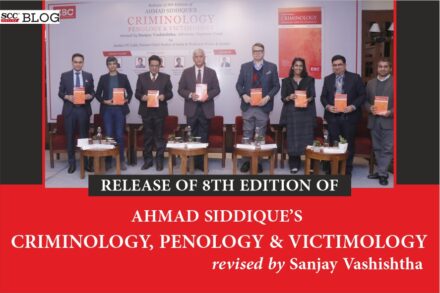Introduction
This paper revolves around one overarching question — are housing societies subject to labour laws? Since there are a number of labour laws in India, dealing with different aspects of the labour market and conferring different benefits on those covered, this paper has been narrowed down to three of them to engage in a deeper analysis. It will focus on the Industrial Disputes Act, 19471 (ID Act), the Employees’ State Insurance Act, 19482 (ESI Act) and the Employees’ Provident Funds and Miscellaneous Provisions Act, 19523 (EPF Act).
Part I looks into how the courts have dealt with the question under the three statutes. The judicial position appears to be dominated by a similar line of judgments. Going ahead, Part II considers whether the decisions provide a conclusive answer to the bigger question. It addresses the issues left unanswered by the courts so far, such as the application of the triple test laid down in Bangalore Water Supply & Sewerage Board v. A Rajappa4 (BWSSB) the judgments being limited to their facts, alignment with the purpose of the statutes, and the viewpoint of workers. The last part, then, concludes by answering the question. Overall, the paper argues that because the judicial position is laden with cases involving similar facts, the answer to the question is not yet decisive.
Part I — Judicial position with respect to housing societies
Under the Industrial Disputes Act, 1947
Under the ID Act, the word “industry” has been defined very broadly,5 purporting to cover all possible workplaces. However, in BWSSB case, it was held that such a definition has to be shrunk based on the context and the purposes of the Act.6 Since the ID Act aims at the investigation and settlement of industrial disputes,7 the Court therein laid down a triple test to determine whether an activity comes within the ambit of “industry”. To satisfy the test, there should be: (i) systematic activity; (ii) cooperation between employer and employee; and (iii) production and/or distribution of goods and services to fulfil human wants.8
One of the earliest cases in which the Supreme Court dealt with the question whether a housing society is an “industry” under Section 2(j) of the ID Act is Som Vihar Apartment Owners’ Housing Maintenance Society Ltd. v. Workmen9. The Court used the triple test and held that since the domestic servants were rendering personal services to a small group of flat owners, the elements were not satisfied.10 It was also pointed out that there was no systematic activity being carried out as the society was formed only for the members to engage personal services.11 From this case, it follows that personal services do not amount to systematic activity.12 Going ahead, Som Vihar case13 has been followed in other cases dealing with the question of housing societies.
In Mohd. Manjur v. Shyam Kunj Occupants’ Society, the Supreme Court (SC) refused to interfere with the conclusion arrived at in Som Vihar case14. The question next arose in Arihant Siddhi Coop. Housing Society Ltd. v. Pushpa Vishnu More.15 Here, a watchman claimed reinstatement on the ground of being a permanent employee of the society, while the society contended that since the services rendered were personal in nature, it did not fall within Section 2(j) of the ID Act.16 This case was different because the society earned profits through additional income from its members, and based on this, the respondent argued that the profit motive was proved. However, the Court relied on the dominant nature test17 laid down in BWSSB case18 and held that the mere fact of charging extra money from some of its members does not convert a housing society into an industry carrying on business.19 Consequently, the society did not meet the definition of “industry”.
More recently, the Allahabad High Court (HC), in Arun Vihar Residents Welfare Assn. v. State of U.P.20, dealt with similar facts as in Arihant Siddhi case21. It was again held that since the society was formed for providing personal maintenance facilities to its members, its activity is not systematic activity as per the triple test.22 Further, any ancillary activity would not change the nature of the main activity, applying the dominant nature test.23 Similar to Som Vihar case24, this case also carved out personal services from systematic activity.
Going by the judgments, the answer is that housing societies fall outside the coverage of the ID Act. The common thread running across all of them is that the services were held to be personal in nature. The other two elements of the triple test were not even considered by the courts.
Under the Employees’ State Insurance Act, 1948
According to Section 1(4) of the ESI Act, it firstly applies to factories other than seasonal factories.25 Other than that, the appropriate Government can extend its application to any other establishment.26 The use of “otherwise” indicates that it can be any establishment, irrespective of the nature of activity being carried out.
The question whether housing societies are subject to the ESI Act came up for determination in ESI Corpn. v. Tulsiani Chambers Premises Coop. Society27. Here, the impugned notification under Section 1(5) mentioned the word “shop” and not “society”.28 The appellants argued that since the employees of the society rendered economic services which were in demand (such as cleaning, sweeping, maintaining gardens, repairs, etc.), the society fell within “shop” as notified in the State Notification.29 However, the Court held that the services rendered were domestic in nature, and could not be said to be economic activity.30 “Shop” was taken to entail sale/purchase or giving/taking of goods.31 Further, it noted that shops and societies are distinct in all respects, and the intention of the State is clear from the word used.32 Therefore, despite having employed more than twenty employees,33 the society was held outside the ambit of the ESI Act because the notification did not specifically mention the term.
In 2014, in Bangalore Turf Club Ltd. v. ESI Corpn.34, the SC dealt with what comes under “establishment” as well as “shop” for the purposes of the ESI Act. It held that the test of “establishment” is whether a systematic economic or commercial activity is carried out in the premises for production/distribution of goods and services.35 “Shop” was considered to be a subset of “establishment” i.e. an establishment where an organised commercial activity takes place in the form of sale or purchase of goods and services.36 It can thus be seen that courts have imported the nature of activity into Section 1(5), which initially appeared to be of very wide amplitude because of the use of “otherwise”. If this interpretation of “establishment” is used, the first element of the triple test laid down in BWSSB case37 gets indirectly introduced into the ESI Act as well. Considering that the ESI Act is a social welfare legislation, is such a restricted reading in line with the object? This is a question which Part II will delve into.
Under the Employees’ Provident Funds and Miscellaneous Provisions Act, 1952
Section 1(3) of the EPF Act deals with its applicability. Under clause (a), an establishment which is a factory engaged in any industry mentioned in Schedule 1 comes within the ambit of the Act, provided it meets the numerical threshold of twenty persons.38 For an establishment to be a “factory”, a manufacturing process has to be carried out in its premises.39 Schedule 1 does not mention housing societies, or any activity with which housing societies are ordinarily associated with.40
Under clause (b) of Section 1(3), establishments other than factories can be notified by the Central Government.41 This is where housing societies can come under the coverage of the Act, depending on the notification and the interpretation given to “establishment”. This question came up for determination before the Bombay HC in Backbay Premises Coop. Society Ltd. v. Union of India42. The impugned notification contained “societies, clubs or associations which provide boarding or lodging or both facilities to their members or their guests on payment”.43 However, the society herein did not provide any such services on payment, it merely collected maintenance and other statutory charges from its members.44 The Court also noted that a notification under Section 1(3)(b) can only be issued in respect of non-factory industries, and housing societies cannot come within the ambit of non-factory industries.45
Although the EPF Act does not define the word “industry”, the Court proceeded on the assumption that industry requires some commercial or business activity. Like the ESI Act, the nature of activity has been introduced into Section 1(3)(b) of the EPF Act. Further, Section 1(3)(b) does not use the word “industry”, the Bombay HC sourced it based on the subject-matter of other items mentioned in Appendix A to the Employees’ Provident Funds Scheme, 195246.47 Other than Backbay Premises case48 where the word “societies” was used, there has not been any notification under Section 1(3)(b) so far which expressly mentions “housing societies”.
To put it shortly, going by the judicial dicta, housing societies are not covered by any of the three statutes. In the absence of statutory definitions, courts have introduced the requirement of a systematic, business or economic activity being carried out. The activities of housing societies, considered to be personal in nature, have not fulfilled this requirement.
Part II — Limitations in the courts’ interpretation and questions to ponder
Does systematic activity per se exclude personal services?
In the triple test laid down in BWSSB case, carrying on a systematic activity was held to be a necessary element of “industry” under Section 2(j) of the ID Act.49 By systematic activity, the Court meant an organised activity characterised by a plurality of workmen,50 as opposed to casual or isolated endeavours undertaken by one or two individuals. There was no clarification over the required numerical threshold, implying that it was a fact-based assessment to be carried out by courts on a case-to-case basis. The Court in BWSSB case51 did not mention rendering of personal services to be excluded from systematic activity. In Som Vihar case52, Mohd. Manjur case53 as well as Arun Vihar case54, the Court proceeded on the assumption that personal services fell outside systematic activity. The common thing in all three cases was that the number of workers as well as the number of apartment owners having constituted themselves into a society was very small. Though the numerical threshold has not been specified, it could be the case that the Court’s opinion was influenced by the number being too small.
Personal services such as cleaning, sweeping, gardening, repairing, etc. if provided on a regular basis to a large number of recipients, could be organised into being a systematic activity. It is no longer an isolated adventure if the frequency as well as the number of recipients is significant. The courts post-BWSSB have applied the triple test in a restrictive manner. It remains to be seen how they apply the systematic activity element in cases where the number of workers is greater, and the services rendered are the same i.e. domestic and personal.
Are the judgments limited to their facts?
Considering the judicial trend, how safe is it to say that housing societies are not covered by the labour laws? It is argued here that the conclusion should be approached with caution because the judgments are limited to their facts. Beginning with Som Vihar case55, in all the societies mentioned here, the workers provided domestic services to a small number of flat owners. Even where other activities were carried out, such as carrying on coaching classes56 or hiring out their terrace for erection of telephone tower,57 they were done by an even smaller section of the owners. This made the application of the dominant nature test very easy.
In today’s world, housing societies are of different types. It ranges from five apartment owners coming together to constitute themselves into a society for the provision of regular maintenance services, to societies consisting of over a hundred flats. It might be that a society of the latter kind engages a fleet of hundred workers to render services like cleaning, repairs and security to the entire mass of residents. This organised provision of services would be very different from a society employing one watchman as in Arihant Siddhi case58. It would be difficult to arrive at the conclusion that such a large-scale rendering of services is an isolated venture or not a systematic activity.
Does a restrictive reading align with the purpose of the statutes?
The Preamble to the ESI Act mentions that it was enacted to provide certain benefits to employees during illness, maternity and injury.59 In Bangalore Turf Club case, the Court noted that it is a welfare legislation introduced to provide a scheme of health insurance for workers.60 Courts often adopt the liberal rule of interpretation in statutes of this kind to ensure a large enough coverage according to the intention of the legislature.61 Further, Section 1(5) of the ESI Act has been worded very widely, giving the appropriate Government the power to extend the Act to any establishment apart from factories.62 However, “establishment” has been interpreted in a restrictive manner by the courts. In both Tulsiani Chambers and Bangalore Turf Club63 cases, “establishment” has been read to include activities which are economic and business-related in nature. “Shop” has been given an even narrow meaning, mandating sale or purchase.64 This has taken a large number of workers who might be working in places carrying out other activities outside the ambit of the Act. All of this is despite the fact that Section 1(5) uses “otherwise”, indicating that the class of establishments mentioned is only illustrative.
Similar is the case with the EPF Act as well. In Sayaji Mills Ltd. v. EPFO, it was noted that the EPF Act is a beneficial legislation and every interpretation which defeats its object must be rejected.65 However, the scope of Section 1(3)(b) has been restricted in Backbay Premises case by limiting its application only to non-factory industries.66 It is argued here that introducing the nature of activity has severely narrowed the ambit of both the statutes, which were meant to cover and confer benefits on a larger section of workers. It is contradictory to the object as well as the broad language used.
What about the viewpoint of workers?
In BWSSB case, Justice Krishna Iyer alluded to the fact that from the vantage point of workers, there is no difference between working under a commercial-minded employer and otherwise.67 In both, workers provide labour in return for wages and conditions of service.68 He further noted that industrial relations between the employer and the employee remain the same, irrespective of the nature of activity.69 If we look at housing societies using this observation, it would appear that the coverage of the statutes should be extended to them. Even in the cases mentioned in the paper which employed a small number of workers, the wages and conditions of services were ensured by the society, and not by individual flat owners. From the vantage point of workers, their employer is the housing society.
Courts’ emphasis on personal services and the nature of activity has failed to consider the viewpoint of workers.
Conclusion
At present, the legal position is that housing societies are not covered by the ID Act, the ESI Act and the EPF Act. However, as this paper has shown, the conclusion is composed of only one line of cases. Since housing societies are increasing in size and complexity, it would be premature to say that the answer is applicable across the entire spectrum of societies. Further, when the questions discussed in Part II are accounted for, the reasoning behind the cases appears to be severely limited. While the judicial dicta stands for small societies, it would be interesting to see how courts deal with the same question in respect of larger housing societies and projects. The application of the systematic activity element to distinct facts will determine the question in its entirety.
*Student, 3rd year, BA LLB (Hons.) National Law School of India University, Bengaluru. Author can be reached at: bhuwan.sarine@nls.ac.in.
1. Industrial Disputes Act, 1947.
2. Employees’ State Insurance Act, 1948.
3. Employees’ Provident Funds and Miscellaneous Provisions Act, 1952.
5. Industrial Disputes Act, 1947, S. 2(j).
6. (1978) 2 SCC 213, para 141.
7. Industrial Disputes Act 1947, Preamble.
8. (1978) 2 SCC 213, para 140.
10. (2002) 9 SCC 652, para 7.
12. Note that there was no mention or discussion of the actual number of flat owners or domestic servants in the case.
15. 2018 SCC OnLine Bom 21459.
16. 2018 SCC OnLine Bom 21459, para 3.
17. The dominant nature test laid down in BWSSB case, (1978) 2 SCC 213 is that when there are multiple activities carried on by an establishment, what is to be considered is its dominant function.
18. (1978) 2 SCC 213, para 143.
19. 2018 SCC OnLine Bom 21459, para 5.
21. 2018 SCC OnLine Bom 21459.
22. 2019 SCC OnLine All 5908, para 25.
25. Employees’ State Insurance Act, 1948, S. 1(4).
26. Employees’ State Insurance Act, 1948, S. 1(5).
27. 2007 SCC OnLine Bom 1010, para 29.
28. 2007 SCC OnLine Bom 1010, para 48.
29. 2007 SCC OnLine Bom 1010, para 29.
30. 2007 SCC OnLine Bom 1010, para 52.
31. 2007 SCC OnLine Bom 1010, para 47.
32. 2007 SCC OnLine Bom 1010, para 48.
33. 2007 SCC OnLine Bom 1010, para 37.
35. (2014) 9 SCC 657, para 39.
36. (2014) 9 SCC 657, para 44.
38. Employees’ Provident Funds and Miscellaneous Provisions Act, 1952, S. 1(3)(a).
39. Employees’ Provident Funds and Miscellaneous Provisions Act, 1952, S. 2(g).
40. Employees’ Provident Funds and Miscellaneous Provisions Act, 1952, Sch. 1.
41. Employees’ Provident Funds and Miscellaneous Provisions Act, 1952, S. 1(3)(b).
43. 1997 SCC OnLine Bom 586, para 6.
44. 1997 SCC OnLine Bom 586, para 7.
46. Employees’ Provident Funds Scheme, 1952, Appendix A.
49. (1978) 2 SCC 213, para 140.
50. (1978) 2 SCC 213, para 88.
56. 2018 SCC OnLine Bom 21459, para 5.
57. Shantivan-II Coop. Housing Society v. Manjula Govind Mahida, 2018 SCC OnLine Bom 21462, para 7.
58. 2018 SCC OnLine Bom 21459.
59. Employees’ State Insurance Act, 1948, Preamble.
60. (2014) 9 SCC 657, para 18.
61. (2014) 9 SCC 657, para 17.
62. Employees’ State Insurance Act, 1948, S. 1(5).
64. 2007 SCC OnLine Bom 1010, para 47.
65. 1984 Supp SCC 610, para 8.
66. 1997 SCC OnLine Bom 586, para 7.
67. (1978) 2 SCC 213, para 107.






